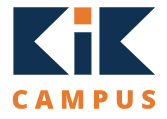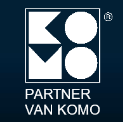Safety Culture Ladder (SCL Certification).
Unfortunately, many industrial accidents still occur each year due to unsafe actions. It is important to focus on consciously acting safely within your company. Certify your company using the Safety Culture Ladder (SCL). This is an assessment method to measure safety awareness and conscious safe action in your company. As of January 1, 2022, the SCL is mandatory for many organizations within the construction industry. SKG-IKOB helps you properly introduce the Safety Culture Ladder in your company.
What is the Safety Culture Ladder?
In the construction industry, safety is a top priority. Ensuring a safe work environment goes beyond compliance with rules; it requires a culture of safety and awareness at every level of an organization. This is where the Safety Culture Ladder (SCL) comes in.
The Safety Culture Ladder, formerly known as the Safety Ladder, is an assessment method that measures and helps improve safety awareness and deliberate safe actions in companies. It is a scheme made up of several steps, with each step reflecting how a company is performing in terms of safety. As of 2022, achieving at least Step 2 is a requirement, and by 2024 it will be raised to Step 3.
With Safety Culture Ladder certification through SKG-IKOB, you can:
- Increase safety awareness within your organization
- Reduce the number of incidents through a higher safety culture
- Demonstrate that your company has achieved a certain level of safety culture
At SKG-IKOB, we guide you in implementing the Safety Culture Ladder so that you not only comply with legal requirements, but also create a safer and more responsible work environment.
Are you ready to take your company's safety culture to the next level? Find out how SKG-IKOB can help you achieve your Safety Culture Ladder certification.
Why choose SKG-IKOB for your SCL certification
When pursuing a higher level of safety culture within your organization, it is essential to have a reliable and experienced partner on your side. Here are the reasons why SKG-IKOB is the best choice for your SCL certification:
- Expertise: With years of experience in the field, SKG-IKOB has the necessary expertise to guide you through the complex process of SCL certification.
- Personalized approach: We understand that every organization is unique. Therefore, we offer a personalized approach tailored to your company's specific needs and goals.
- Support at every step: From initial assessment to final certification, SKG-IKOB is at your side, providing support and guidance at every step of the process.
- Competitive rates: At SKG-IKOB, you get value for money. We offer competitive rates without sacrificing quality of service.
- Positive impact on your business: By choosing SKG-IKOB, not only do you increase the level of safety culture in your organization, but you also build a reputation of trust and reliability in the industry.
By choosing SKG-IKOB for your SCL certification, you are taking a step toward a safer and more responsible corporate culture. Contact us today to find out how we can help you achieve your safety goals.
The Steps of the Safety Culture Ladder
The Safety Culture Ladder is designed to help organizations develop and maintain a high standard of safety culture. It is composed of several steps, each with its own set of criteria and objectives. Below we explore each step in detail:
Safety Ladder Step 1 through Step 5
- Tier 1: Pathological
Safety barely plays a role
An organization or team with a pathological culture hardly has safety in mind. The organization does not recognize the usefulness of preventive safety measures. "We're doing well here, so we don't waste time or money on prevention," is a common attitude. Safety is more of an afterthought than a main issue, and there is little investment in improving safety behaviors. - Step 2: Reactive
Attention to safety is ad hoc and short-term
In a reactive culture, the organization takes action only after incidents occur. Actions are often ad hoc and focused on the short term. Once an incident is resolved, attention to safety subsides again. Managers point out rules and procedures to employees, but do nothing when they do not comply. There is little structural attention to safety: only when an incident has occurred. - Tier 3: Calculating
The focus is on systems, but not on implementation on the shop floor
In a calculating culture, the main focus is on safety management systems and overviews to control risks and prevent incidents. There is much emphasis on collecting information and data. Because things are well organized on paper, the organization thinks it is working safely. But it is mainly the managers who are involved in safety and compliance with laws and regulations, rather than the employees. (Near) accidents and unsafe situations are therefore not always reported. Adjustments are mainly aimed at establishing or tightening rules and procedures. - Step 4: Proactive
Company-wide awareness of safety
In a proactive culture, the focus is on attitude and behavior, increasing safety awareness and managing unexpected events. Everyone in the company is alert and working daily to prevent unsafe situations. Employees are well informed and consciously see safe working as a shared responsibility. It is natural for everyone to help remind each other of the agreements made, both internally and externally. Management facilitates and encourages active employee involvement. If incidents do occur, they are used to learn from them and to prevent recurrence. - Step 5: Progressive
Attention to safety is self-evident in all business processes
Safety is given the same priority and attention as money, time and quality in daily practice.
There is a strong focus on continuous improvement, learning from (un)desired events, adaptability and situational action. This attitude is completely natural and is in all layers and processes of the organization. From planning, design, decision making, execution, monitoring, reflection to learning. When it comes to safety, there is no distinction between managers and employees. Management knows what is going on because employees feel perfectly safe to share this information.
This segment details each step of the Safety Culture Ladder, focusing on the specifics of each level and how it can be achieved. This helps organizations see a clear path to improving their safety culture.
Your certification options with SKG-IKOB
At SKG-IKOB, we understand that every organization is unique, which is why we offer several certification options to meet your specific needs. Below is a detailed explanation of each option:
SCL Original
- Description: A comprehensive certification route in which SKG-IKOB conducts a full audit every year.
- Benefits: Obtain a certificate valid for 3 years, ensuring a thorough assessment of your safety culture.
- How to achieve: Start with a full audit in the first year, followed by annual audits to maintain the standard.
SCL Light
- Description: A lighter version of the SCL Original, ideal for smaller organizations or those just starting to build their safety culture.
- Benefits: Receive a statement with step indication valid for 3 years, with a more phased and flexible approach to certification.
- How to achieve: Start with a 40% audit in the first year, followed by an action plan in the second and third years.
Approved Self Assessment (changes in Self Assessment).
- Description: An option where the company performs its own evaluation, which is then checked by SKG-IKOB for process correctness.
- Benefits: Obtain a statement without step indication that is valid for 3 years, giving you the freedom to conduct your own evaluation.
- How to Achieve: Conduct a one-day self-assessment in the first year, followed by semi-annual audits in the second and third years.
The Approved Self Assessment (ASA) expires permanently on Jan. 1, 2026, giving way to a powerful new product: SA (Self Assessment). Organizations will start working independently, without an external audit. SA offers an approachable and valuable introduction to the SCL- via the well-known web tool, including GAP analysis, behavioral objectives and a formal self-declaration. Current trajectories for the ASA can be completed until December 31, 2025, new trajectories can start immediately with the Self Assessment. See the Safety Culture Ladder Innovations section below for more information.
This section details the various certification options offered by SKG-IKOB, including the benefits of each and how they can be achieved. This provides potential customers with a clear picture of what to expect when choosing SKG-IKOB for their SCL certification.
Innovations in Safety Culture Ladder products.
Effective June 1, 2025, NEN, schema manager of the Safety Culture Ladder, is launching updated products within the Safety Culture Ladder. These enhancements make the Safety Culture Ladder more accessible to smaller organizations. Read more here.
Frequently Asked Questions
In this section, we answer the most frequently asked questions about the Safety Culture Ladder and the certification process. If you cannot find the answer to your question, please feel free to contact us for more information.
What is the Safety Culture Ladder?
The Safety Culture Ladder, formerly known as the Safety Ladder, is a certification scheme that assesses, measures and improves safety awareness and deliberate safe actions in companies. It is composed of several steps, with each level representing a higher standard of safety culture.
How does certification work?
The certification process begins with an assessment of your current safety culture, followed by regular audits conducted by SKG-IKOB to ensure compliance with standards. Several certification options are available, each with its own specific pathway and benefits.
What are the benefits of achieving a higher step?
Achieving a higher rung on the Safety Culture Ladder demonstrates a deeper commitment to safety. It not only improves your company's reputation, but can also reduce incidents and create a safer and more productive work environment.
What does each step of the Safety Culture Ladder entail?
Each step of the Safety Culture Ladder represents a different level of safety culture within an organization. From Step 1 to Step 5, each level places higher demands on a company's safety culture, with a higher step indicating greater responsibility, reflection and investment in safety.
How can I begin the certification process?
To begin the certification process, contact SKG-IKOB for a quote or more information. We offer guidance and support throughout the process to make it as smooth as possible.




